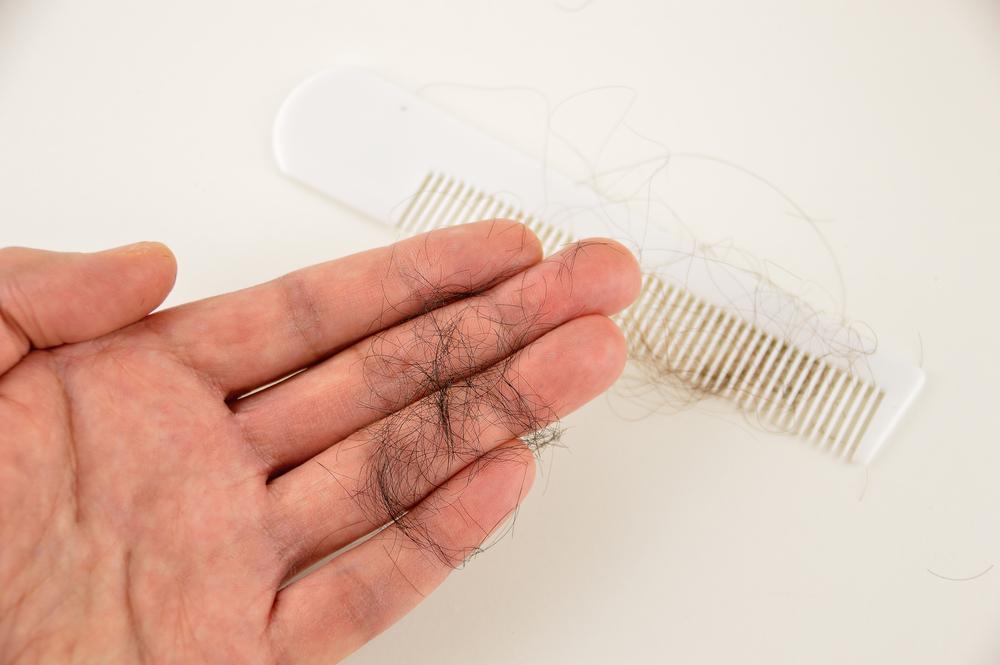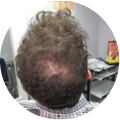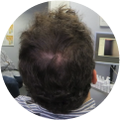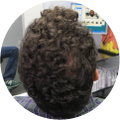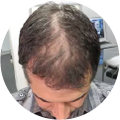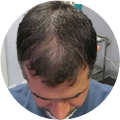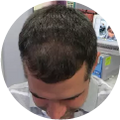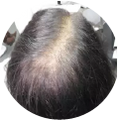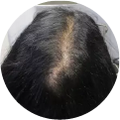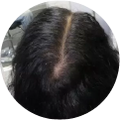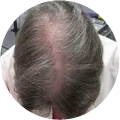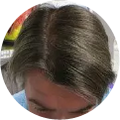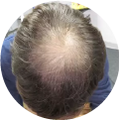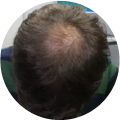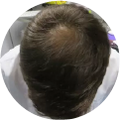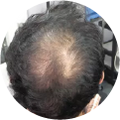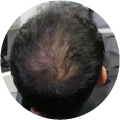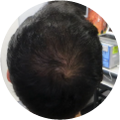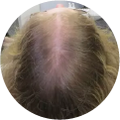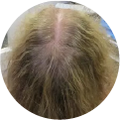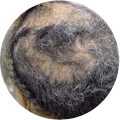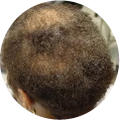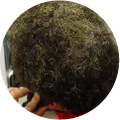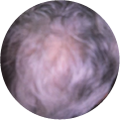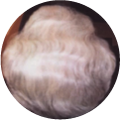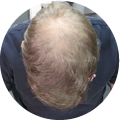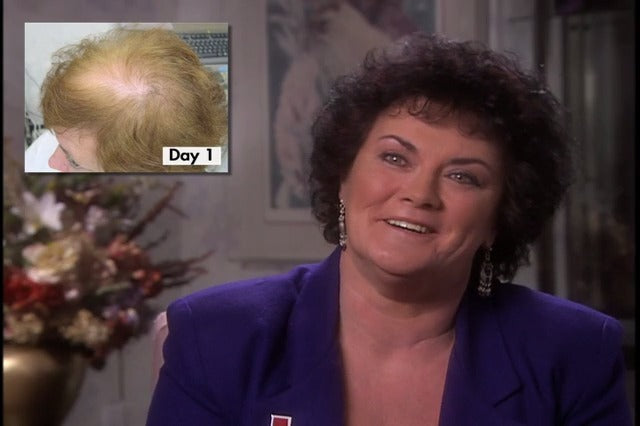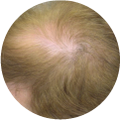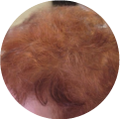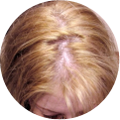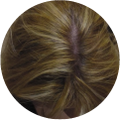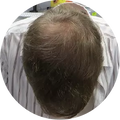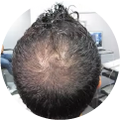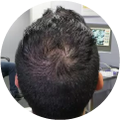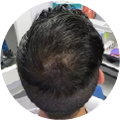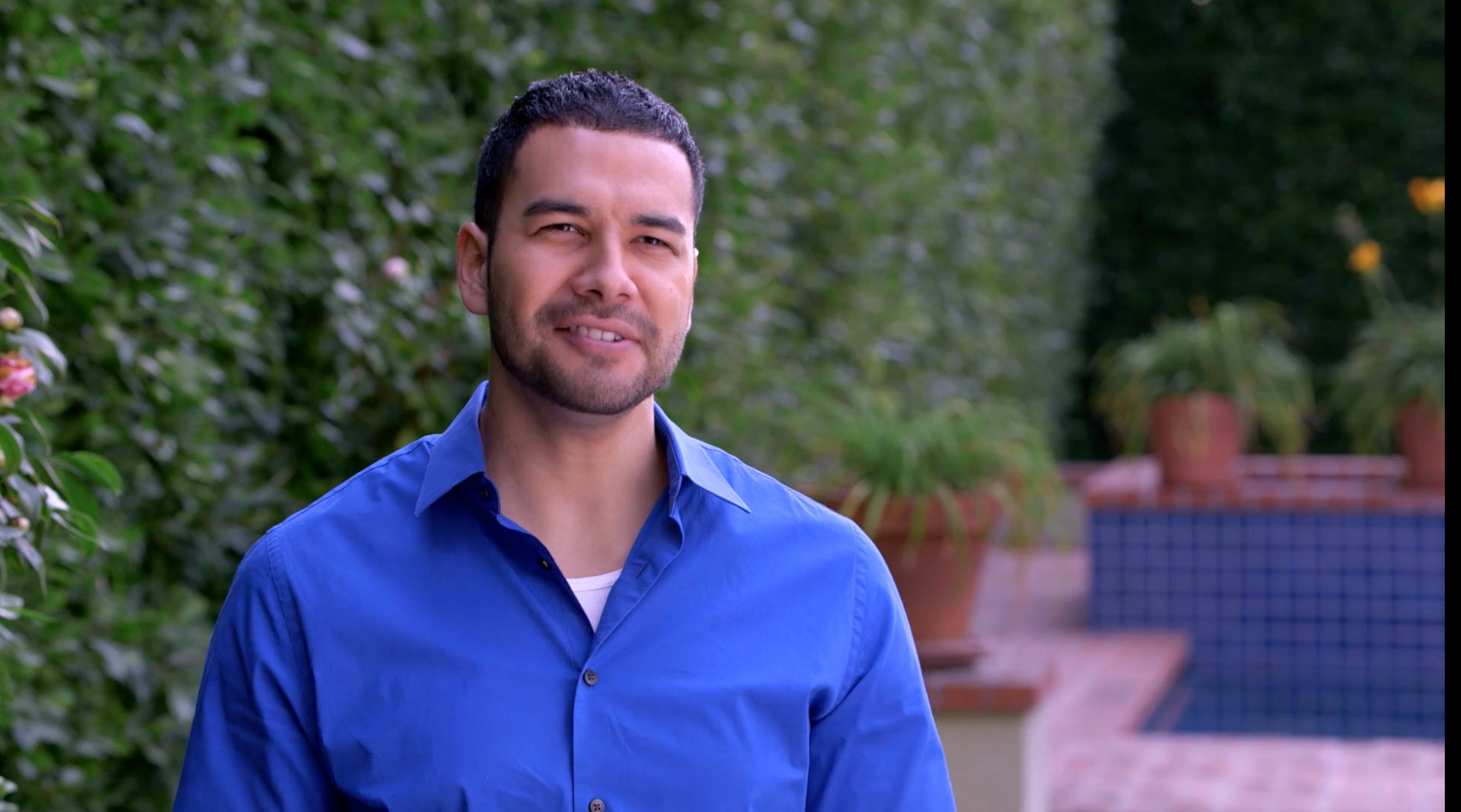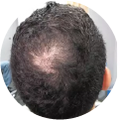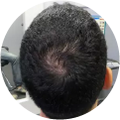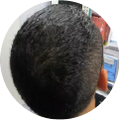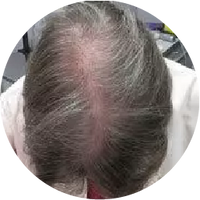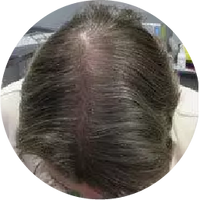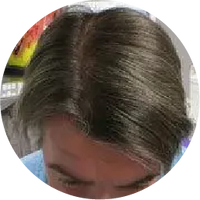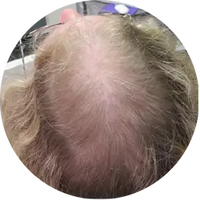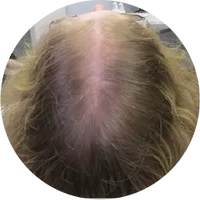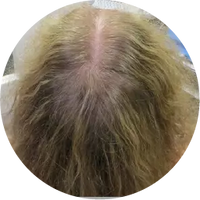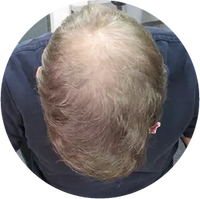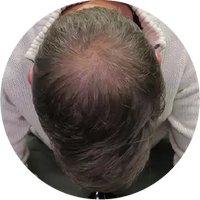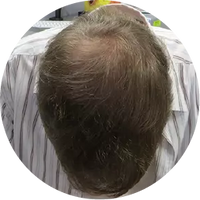
If you have begun to lose hair and are unsure of the type of hair loss you are suffering from, it is important to gain a foundational understanding of the most common types of hair loss and their respective treatment options in order to begin surmising what type of hair loss you are experiencing. Anagen effluvium is a type of hair loss that a number of people experience, but frequently there is a lack of substantial knowledge surrounding this distinct type of hair loss. Anagen effluvium is sometimes confused with telogen effluvium, a different type of hair loss, though there are a number of key differentiating factors between these two distinct types of hair loss. We have put together a guide to provide you with a baseline introduction to what anagen effluvium is, the anagen effluvium treatments available, and the causes of anagen effluvium.
Anagen Effluvium Treatments
If you are suffering from hair loss, it can be tempting to jump straight to trying a variety of different treatments in order to begin generating new hair growth on your scalp; however, this can ultimately be counterproductive if you do not receive a diagnosis of the correct type of hair loss and determine the underlying cause for the hair loss. Before it is possible to effectively analyze the available treatment options for any type of hair loss, it is first necessary to understand how a normal hair growth cycle functions, what the specific type of hair loss is, and how it changes the hair growth cycle.
The hair growth cycle is comprised of three distinct phases: anagen, catagen, and telogen. Anagen is the active growth phase of the hair growth cycle. The anagen phase is characterized by a consistent, rapid division of cells at the root at the base of the hair. This accelerated process of cellular division results in a new hair being pushed to the surface of the scalp. As the new hair pushes through the surface of the scalp, it dislodges the club hair on the surface and replaces it with a new, healthy hair follicle. At any given time, the majority of the hair follicles on the surface of the scalp are in the anagen phase of the hair growth cycle. On average, an individual’s hair will grow one centimeter per month when it is in the anagen growth phase. The duration of the anagen phase varies between individuals, as well as between different hairs on the same scalp. A number of determining factors contribute to the duration of each individual’s anagen phase length. Once a hair follicle has stopped actively growing, it enters the catagen phase of the hair growth cycle. The catagen phase of the hair growth cycle is a transitional time for the hair follicle as it begins to form into a club hair. During the catagen phase, the outer root sheath of the hair diminishes in size and begins to connect with the root of the hair. The catagen phase of the hair growth cycle often lasts between two to three weeks. Once the hair follicle has completed its transformation into a club hair, it begins the rest phase of the hair growth cycle, the telogen phase. During the telogen phase, the hair follicle is in a state of temporary dormancy that it remains in until it naturally sheds from the scalp. Individuals shed on average twenty-five to one hundred hair follicles per day. While a large number of the hairs on the surface on the scalp are in the anagen phase at any given moment, only eight to ten percent of the hairs on the head are in the telogen phase at one time. Since this is the resting and shedding phase of hair growth, the percentage of hairs in the telogen phase falls within this smaller threshold so that there is no noticeable hair loss, only enough loss to continually refresh the supply of healthy, new hair follicles on the scalp. Once a new hair is formed and successfully pushes out a club hair, the telogen phase ends and the anagen phase begins again, thereby completing and restarting the hair growth cycle.
With this understanding in mind, it is possible to analyze how this process is disrupted by anagen effluvium. Anagen effluvium affects the anagen phase of the hair growth cycle, which is how it earned its apt title. Anagen effluvium results in significant hair loss due to the fracture of the hair shaft at the scalp. This is a common misconception about anagen effluvium, as many people believe the hair is shedding, but it is in fact breaking. The breakage of the hair shaft at the scalp is due to the disturbance of matrix cells of the hair follicles. When this condition occurs, the rapid cell division that takes place at the shaft of the hair during the anagen growth phase experiences a drastic downturn due to an injury sustained by the keratinocytes in the hair matrix. The damage inflicted upon the keratinocytes in the hair matrix slows the metabolic activity of the hair shaft during the anagen phase. As mentioned above, the anagen phase of the hair growth cycle is the only phase that includes active growth, and the disruption of the cellular division at the shaft of the hair significantly impacts the health and number of hairs present on the scalp. When anagen effluvium begins to occur, the hair follicle shape and texture will change. The hair follicle will begin to possess a dystrophic hair shaft that quickly tapers, which is often referred to as bayonet hair. This change is shape is due to the rapid decrease in cell division at the hair shaft, which weakens and thins the hair shaft and significantly increases the probability that the hair shaft will fracture with even minimal trauma once it reaches the surface of the scalp. The breakage of hair follicles often begins within a few days or weeks after the hair follicle has been injured.
When discussing anagen effluvium, it is common for individuals to lack an understanding of the differences between telogen effluvium and anagen effluvium. However, to correctly identify which type of hair loss is occurring and treat the hair loss accordingly, it is vital to possess the ability to discern the differences between telogen effluvium and anagen effluvium. Telogen effluvium occurs when there is a significant increase in hair follicles that are in the telogen phase and dormant, which leads to a marked increase in hair shedding. Below are a few of the key differences between anagen effluvium vs. telogen effluvium.
- Percentage of Hairs Affected:One of the most notable differences between anagen effluvium and telogen effluvium is the number of hairs affected. Because significantly more hairs on the scalp are in the anagen phase at any given time, anagen effluvium can affect more hairs on the scalp than telogen effluvium. While anagen effluvium can involve up to ninety percent of the hairs on the head, telogen effluvium rarely affects more than fifty percent of the hairs on the head. Because only roughly ten percent of the hairs on the head are in the telogen phase at one time, it can be a much less severe form of hair loss than anagen effluvium. Anagen effluvium does not affect hairs in the telogen phase since they are not mitotically active, which is why it does not affect all hairs on the head.
- Method of Hair Loss:A primary difference between anagen effluvium and telogen effluvium is how the hair on the head is lost. With telogen effluvium, the hair loss is occurring due to an increase in resting, or dormant, hair follicles which will shed from the scalp. However, hair loss due to anagen effluvium is not typically hair shedding, but hair loss due to breakage of the hair shaft. This means that the hairs shed from these two distinct types of hair loss often will appear different when examined closely since they are shed by two different methods of hair loss.
- Duration of Time Passed Until Hair Loss Occurs:Another important difference between telogen effluvium and anagen effluvium is the amount of time that passes from the initial injury to the hair follicle or systemic issue occurring and when the hair loss begins to take place. With anagen effluvium, hair loss begins to occur within the days to weeks following the initial injury to the follicle. On the other hand, telogen effluvium often takes three to four months after the systemic issue takes place for the hair loss to begin occurring.
With these distinct differences in mind, it is possible to examine the potential anagen effluvium treatments. The first step to successfully diagnosing and treating anagen effluvium is identifying the environmental irritant that is causing the hair loss. Anagen effluvium occurs when the anagen phase of the hair growth cycle becomes compromised and begins to function ineffectually, resulting in a loss of hairs on the surface of the scalp. Often, there is an environmental factor that is causing this to occur or an underlying disease. Finding the true root cause of the anagen effluvium will be integral to successfully select the right treatment option. Upon determining the cause of the damage to the cell division process in the anagen phase of the hair growth process, the next step is to work with a licensed medical professional to determine the possible treatment options. Often, the best solution is the remove the environmental irritant that is causing the anagen effluvium to occur; however, in some cases, this may not be a possibility as anagen effluvium is sometimes caused by medications and treatments used to treat life-threatening medical conditions. In some instances, it may be best to explore other avenues of treatment to help slow or stop hair loss. One of the best treatment options to utilize is a topical minoxidil product, such as ScalpMed, to help stimulate the growth of new hair and stop the rapid hair loss. It is always best to check with a licensed medical professional to ensure a topical minoxidil product will not interact with any other medications you are taking or treatments you are undergoing.
Anagen Effluvium Symptoms
Detecting the onset of anagen effluvium early will help to limit the amount of hair loss and the severity of the damage to the hair follicles. Knowing how to recognize anagen effluvium symptoms is vital to seek medical care early in the process so that the right treatment option can be selected. The most common symptom of anagen effluvium is unexplained hair loss, which is sometimes sudden in its onset and progresses rapidly. As mentioned above, anagen effluvium can affect up to ninety percent of the hairs on the head, which can make its impact extremely widespread. In some cases, anagen effluvium may mimic the appearance of alopecia areata and hair loss due to anagen effluvium may also result in redness in the area where the hair is lost. Hair loss will often begin in the days or weeks following exposure to the environmental irritant, but will often worsen significantly within one to two months from exposure to the irritant.
Anagen Effluvium Causes
Finding the cause of the onset of anagen effluvium is key to successfully treating this condition and beginning the process of growing new hair follicles. Anagen effluvium is most often caused by cancer chemotherapy or radiation therapy, or a combination of the two. These treatments are harsh by nature and can be extremely taxing on the human body, which results in side effects, such as anagen effluvium, occurring. Some individuals may be able to try other cancer chemotherapy or radiation therapy options that may lessen the occurrence of anagen effluvium, but this varies on a case-by-case basis and must be determined by a licensed medical professional. In some instances, anagen effluvium can occur due to other causes. Below are a handful of other potential anagen effluvium causes.
- Certain diseases (pemphigus, discoid lupus erythematosus, etc.)
- Poisoning from ingestion of or exposure to a toxic plant
- Loose anagen syndrome
- Heavy metal intoxication
- Compulsive hair pulling (trichotillomania)












